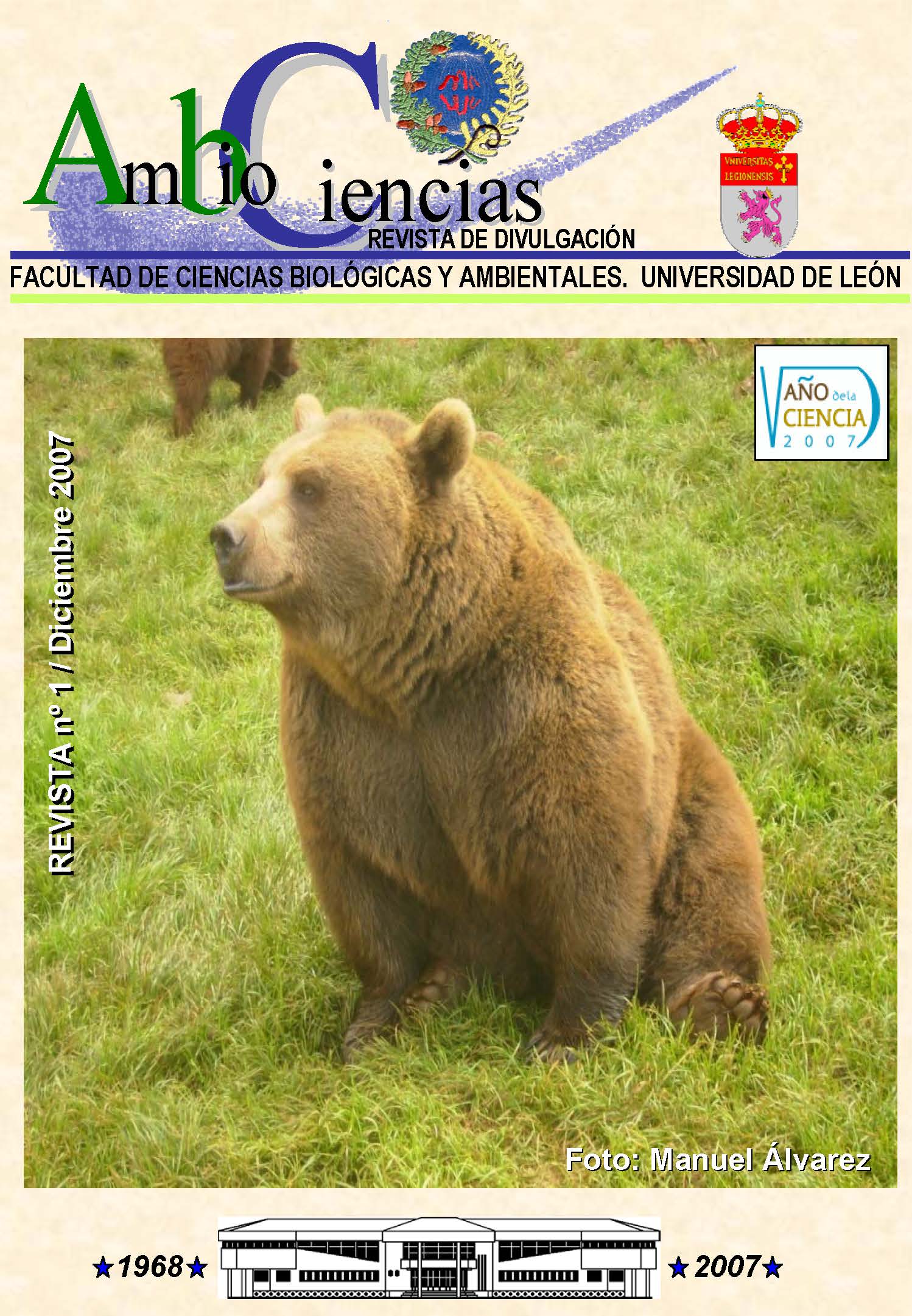Caracterización de los poli-3-hidroxialcanoatos (bioplásticos) acumulados por bacterias recombinantes que expresan independientemente los genes phaC1 y phaC2 de Pseudomonas putida U
DOI :
https://doi.org/10.18002/ambioc.v0i1.4870Mots-clés :
Bioquímica, PHAs, Biopolímeros, Pseudomonas,Résumé
Pseudomonas putida U es una cepa bacteriana que posee capacidad de acumular intracelularmente biopolímeros plásticos, debido a la existencia de un sistema de polimerización-despolimerización (codificado en el locus pha) integrado principalmente por dos polimerasas, PhaC1 y PhaC2. Mediante varios estudios in vivo realizados en este trabajo se ha puesto de manifiesto la diferente especificidad de sustrato de ambas polimerasas, lo que puede contribuir a la síntesis de nuevos bioplásticos (PHAs) con características diferentes a los que se obtienen actualmenteTéléchargements
Références
Anderson, A. J., Haywood, G. W., Williams, D. R., Dawes, E. A. (1990) The production of polyhydroxyalkanoates from unrelated carbon sources. E. A.Dawes (ed.), Novel biodegradable microbial polymers. Kluwer. Academic Publishers, Dordrecht, The Netherlands. vol. 186.
Donnenberg, M.S., Kaper J.B. (1991). Construction of an eae deletion mutant of enteropathogenic Escherichia coli by using a positive-selection suicide vector. Infect. Inmun. 59: 4310-4317.
García, B., Olivera, E. R., Miñambres, B., Fernández-Valverde, M., Cañedo, L. M., Prieto, M. A., García, J. L., Martínez, M., Luengo, J. M. (1999). Novel biodegradable aromatic plastics from a bacterial source. Genetic and biochemical studies on a route of the phenylacetyl-CoA catabolon. J. Biol. Chem. 274: 29228- 29241.
Hanahan, D. (1983) Studies on transformation of Escherichia coli with plasmids. J. Mol. Biol. 166: 557-580.
Haywood, G. W., Anderson, A. J., Williams, G. A., Dawes, E. A., Ewing, D. F. (1991). Accumulation of a poly(hydroxyalkanoate) copolymer containing primarily 3-hydroxyvalerate from simple carbohydrate substrates by Rhodococcus sp. NCIMB 40126. Int. J. Biol. Macromol. 13: 83-88.
Herrero, M., De Lorenzo, V., Timmis, K. N. (1990). Transposon vectors containing non-antibiotic selection markers for cloning and stable chromosomal insertion of foreign DNA in gram-negative bacteria. J. Bacteriol. 172: 6557-6567.
Kovach, M. E., Elzer, P. H., Hill, D. S., Robertson, G. T., Farris, M. A., Roop R. M., Peterson K. M. (1995). Four new derivatives of the broad-host range cloning vector pBBR1MCS, carrying different antibiotic-resistance cassettes. Gene 166: 175-176.
Lageveen, R. G., Huisman, G. W., Preusting, H., Ketelaar, P., Eggink, G., Witholt, B. (1988). Formation of polyesters by Pseudomonas oleovorans. Effect of substrates on formation and composition of poly-(R)-3-hydroxyalkanoates and poly-(R)-3- hydroxyalkenoates. Appl. Environ. Microbiol. 54: 2924-2932.
Martínez-Blanco, H., Reglero, A., Rodríguez-Aparicio, L. B., Luengo, J. M. (1990). Purification and biochemical characterization of phenylacetyl-CoA ligase from Pseudomonas putida. A specific enzyme for the catabolism of phenylacetic acid. J. Biol. Chem. 265: 7084-7090.
Miller, J. H. (1972) Experiments in Molecular Genetics, Cold Spring Harbor Laboratory, Cold Spring Harbor, NY.
Olivera, E. R., Carnicero, D., García, B., Miñambres, B., Moreno, M. A., Cañedo, L., Dirusso, C. C., Naharro, G., Luengo, J. M. (2001a). Two different pathways are envolved in the β-oxidation of n-alkanoic and n-phenylalkanoic acids in Pseudomonas putida U: genetic studies and biotechnological applications. Mol. Microbiol. 39: 863-874.
Olivera, E. R., Carnicero, D., Rodra, R., Miñanbres, B., García, B., Abraham, G. A., Gallardo, J., San Román, J., García, J. L., Naharro, G., Luengo, J. M. (2001b). Genetically engineered Pseudomonas: a factory of new bioplastics with broad applications. Environ. Microbiol. 3: 612-618.
Quandt, J., Hynes, M. F. (1993). Versatile suicide vectors which allow direct selection for gene replacement in Gram-negative bacteria. Gene. 127: 15-21.
Sandoval, A., Arias-Barrau, E., Arcos, M., Naharro, G., Olivera, E. R., Luengo, J. M. (2007) Genetic and structural analysis of different mutants of Pseudomonas putida U affected in the poly-3-hydroxy-n-alkanoate gene cluster. Environ. Microbiol. 9: 737-751.
Valentin, E. H., Lee, Y. E., Choi, C. Y., Steinbüchel, A. (1994). Identification of 4- hydroxyhexanoic acid as a new constituent of biosynthetic polyhydroxyalkanoic acids from bacteria. Appl. Microbiol. Biotechnol. 40: 710-716.
Valentin, H. E., Dennis, D. (1996) Metabolic pathway for poly(3-hydroxybutyrate co- 3-hydroxyvalerate) formation in Nocardia corallina: Inactivation of mutB by chromosomal integration of a kanamycin resistance gene. Appl. Environ. Microbiol. 62: 372-379.
Téléchargements
Publiée
Comment citer
Numéro
Rubrique
Licence
(c) Tous droits réservés Ángel Sandoval, Joaquín Rodríguez, Mario Arcos, Sagrario Rivas 2007

Ce travail est disponible sous licence Creative Commons Attribution - Pas d’Utilisation Commerciale - Partage dans les Mêmes Conditions 4.0 International.
Los autores que publican en esta revista están de acuerdo con los siguientes términos:
- Los autores ceden de forma no exclusiva los derechos de explotación (reproducción, distribución, comunicación pública, transformación) a la Universidad de León, por lo que pueden establecer, por separado, acuerdos adicionales para la distribución no exclusiva de la versión de la obra publicada en la revista (por ejemplo, alojarlo en un repositorio institucional o publicarlo en un libro), con un reconocimiento de su publicación inicial en esta revista.
- Este trabajo se encuentra bajo la Creative Commons Attribution-NonCommercial-ShareAlike 4.0 International License. Puede consultarse desde aquí la versión informativa y el texto legal de la licencia.
- Se permite y se anima a los autores a difundir electrónicamente las versiones pre-print (versión antes de ser evaluada) y/o post-print (versión evaluada y aceptada para su publicación) de sus obras antes de su publicación, ya que favorece su circulación y difusión más temprana y con ello un posible aumento en su citación y alcance entre la comunidad académica.







